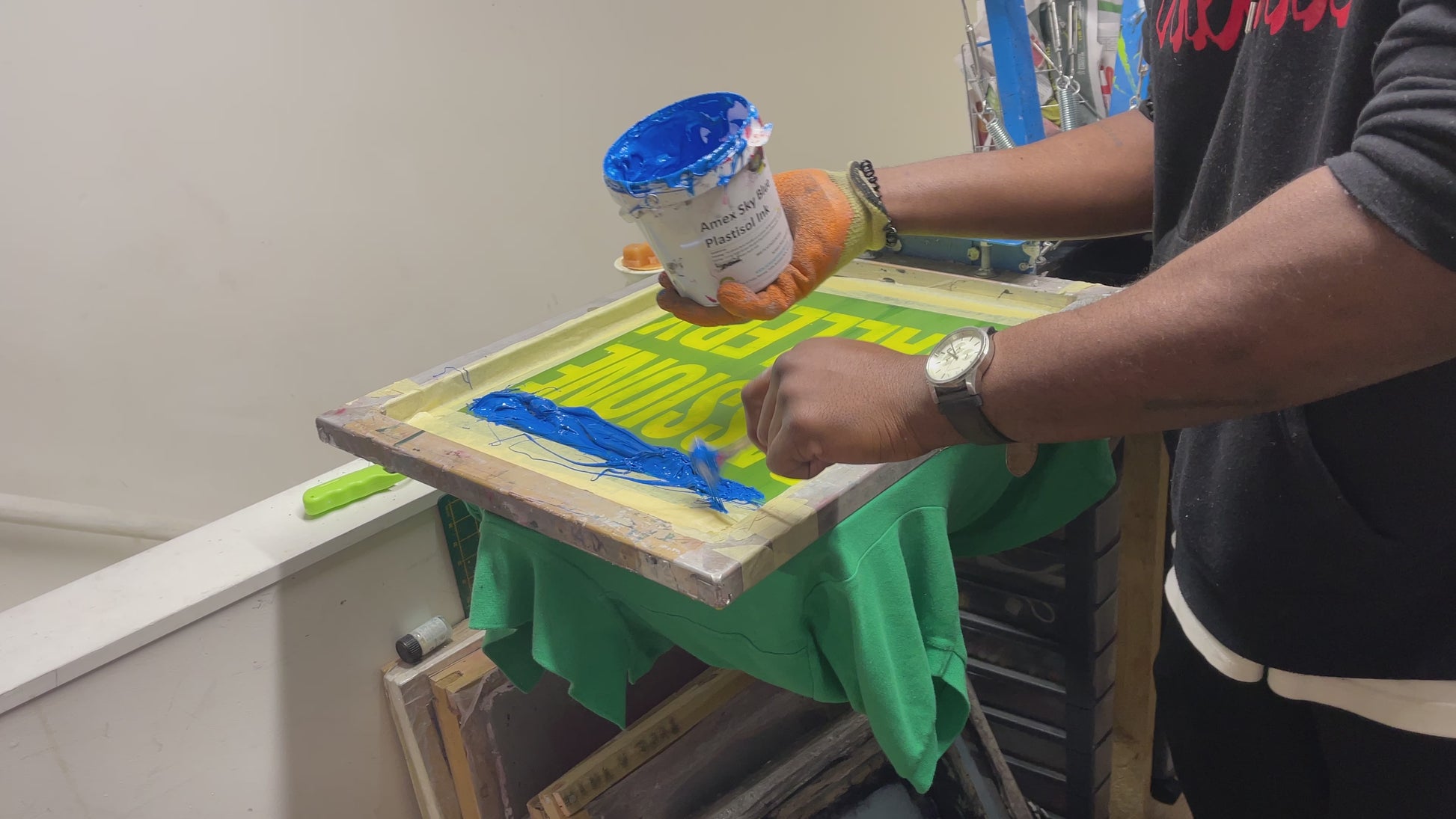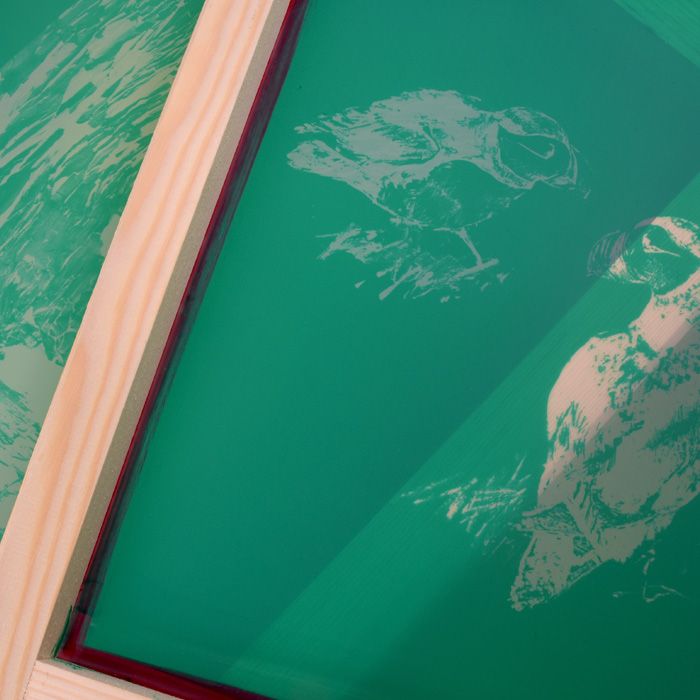Budget-Friendly T-Shirt Printing for Startups
Budget-Friendly T-Shirt Printing for Startups
Blog Article
Display Printing Uncovered: Everything You Need to Find Out About T-Shirt and Garment Printing Strategies
Screen printing is a remarkable approach that incorporates art with technique, offering countless opportunities for imagination. All set to check out the necessary aspects that make screen printing an art kind?
The Essentials of Screen Printing: Just How It Functions
When you dive into display printing, you'll discover it's both a scientific research and an art. At its core, screen printing entails creating a stencil, or display, that allows ink to pass with just in specific areas.
Next, you'll blend your inks and prepare your printing surface area. Setting the screen over the fabric, after that make use of a squeegee to press ink with the display onto the garment. This process requires precision, as you want clear, vivid prints. After printing, you'll heal the ink with warm, ensuring it complies with the fabric and lasts with laundries. Each step is important, and understanding them will elevate your display printing skills, transforming straightforward garments right into unique, expressive pieces.
Sorts Of Display Printing Methods
Once you realize the basics of screen printing, it's time to discover the different methods that can boost your layouts. One popular approach is conventional display printing, where ink is pushed via a stenciled screen. This strategy is wonderful for strong, lively shades. There's water-based ink printing, which offers a softer feeling and is eco-friendly, but it requires a various technique to treating.
An additional choice is plastisol printing, understood for its toughness and dazzling colors, making it a preferred for lots of brands. Experiment with halftone printing to develop gradient effects and detailed styles.
Important Tools for Display Printing
To accomplish spectacular outcomes in screen printing, having the ideal devices is fundamental. Initially, you'll need a tough display printing framework, which holds the mesh that moves your design onto the garment. Next, spend in top notch mops; these are crucial for applying ink equally across the screen. You'll also require an excellent direct exposure unit to develop your displays, along with a washout cubicle for cleansing them after usage. A trustworthy warm resource, like a conveyor clothes dryer or heat press, is crucial for healing your prints to ensure durability. Do not neglect an appropriate workspace, outfitted with tables and storage space for your materials. Finally, protective equipment, such as handwear covers and masks, will keep you risk-free from chemicals and inks. With the right tools, you'll be well on your method to generating professional-quality prints.
Picking the Right Inks and Products
When choosing inks and products for display printing, you require to take into account the kind of ink that works ideal for your task. Consider fabric compatibility to guarantee your layouts look wonderful and last lengthy. Also, explore environmentally friendly ink choices to make your printing process more sustainable.
Types of Screen Inks
Selecting the appropriate screen ink is crucial for accomplishing vibrant, long lasting prints that meet your job's needs. There are a number of kinds of screen inks to check out. Specialized inks, such as metallic or glow-in-the-dark, can add distinct results to your styles.

Material Compatibility Factors To Consider
Recognizing textile compatibility is crucial for attaining high-quality display prints, specifically given that various products respond distinctively to different inks. When picking inks, consider the fabric kind-- cotton, polyester, or blends. For cotton, water-based inks function well, supplying gentleness and breathability. Polyester, on the various other hand, usually calls for plastisol inks for much better attachment and dynamic colors. You could need to use a combination of both types if you're publishing on blends. Always test your inks on example textile to ensure they stick appropriately and keep color stability. Furthermore, remember that fabric weight and appearance can impact the final end result, so picking the best ink and material combination is crucial for your job's success.
Eco-Friendly Ink Options
Environmentally friendly inks are ending up being a popular selection for display printers that desire to reduce their ecological impact while maintaining quality. When selecting inks, consider water-based inks, which are less dangerous and less complicated to clean up compared to traditional solvents.
Furthermore, seek inks made from renewable sources, such as soy or vegetable-based options. By selecting the ideal inks and materials, you'll not only create stunning styles but also contribute to a more sustainable printing process. Make the switch, and your prints will certainly reflect your commitment to the setting!
Preparing Your Design for Display Printing

Submit Layout Requirements
To ensure your layout looks sharp and dynamic on textile, you'll need to pay very close attention to submit format demands for screen printing. Start with vector data like AI or EPS, as they can be scaled without shedding quality. If you make use of raster pictures, select high-resolution documents, such as TIFF or PNG, ideally at 300 DPI. Avoid making use of JPEGs, as they can shed clearness when resized. Likewise, see to it your style has a transparent history to prevent unwanted white sides on your prints. Finally, keep shade settings in mind; CMYK is basic for screen printing, so transform your RGB develops look at these guys as necessary. By following these guidelines, you'll set your art work up for a successful print.
Shade Splitting Up Strategies
Color splitting up is a vital step in preparing your design for display printing, and grasping it can greatly enhance your print high quality. You'll require to damage your layout into private shades, as each color requires a separate screen during printing. This accuracy not just ensures exact color depiction but also simplifies the printing procedure.
Resolution and Dimension
Attaining the ideal results in screen printing starts with guaranteeing your design has the appropriate resolution and dimension. Ideally, your art work ought to go to the very least 300 DPI (dots per inch) for sharp, clear prints. If you use reduced resolution, your end product may look amateur and pixelated.
When it pertains to dimension, think about the dimensions of your print area. Layout your artwork to match the last print size, ideally producing it in the real dimensions you'll be publishing. By doing this, you'll prevent any unforeseen scaling issues.
Always check your layout in both vector and raster styles. Vector graphics can be scaled without shedding quality, making them excellent for display printing. Preparing correctly will guarantee your design looks incredible on every garment!
Step-by-Step Screen Printing Refine
Display printing is a vibrant procedure that allows you to produce vibrant designs on various surfaces. To start, you'll require a screen, emulsion, and your selected ink. First, prepare your screen by cleansing it extensively. Next off, apply the solution evenly and allow it completely dry in a dark area. As soon as dry, subject your display to light with your layout put on it, which will solidify the emulsion where the light hits, producing a pattern - screen printing kit.
Put ink onto the display and utilize a squeegee to press the ink via the stencil onto the textile. Raise the display meticulously and let the print dry. You've efficiently screen printed your design.
Tips for Effective Display Printing Projects
While you're diving right into your screen printing jobs, bear in mind that preparation is essential to success. Beginning by collecting all your products-- inks, mops, displays, and garments. A tidy work area helps avoid unwanted errors, so clean before you begin.
Next, validate your art work is high-resolution and correctly sized for your garment. Examine your display for proper direct exposure and tidy it completely to stay clear of spots. When mixing your inks, comply with the maker's guidelines to attain the best consistency.
Throughout printing, apply even pressure with your squeegee for regular outcomes. Do not rush; take your time to confirm each print satisfies your standards. After printing, allow your garments completely dry completely prior to managing or packaging them.
Lastly, constantly keep a sample of your help future referral. browse around this site In this manner, you can examine your progression and boost your techniques over time. Happy printing!

Frequently Asked Inquiries
For how long Does It Take to Establish up a Display Printing Job?
Establishing a display printing task usually takes around thirty minutes to an hour. You'll prepare the displays, mix inks, and readjust journalism. The time varies based upon intricacy and experience, so stay organized!
Can I Print on Various Material Enters Making Use Of the Very Same Method?
Yes, you can publish on different textile kinds utilizing the same method, but you'll require to change your setups and inks. Some fabrics take in ink in different ways, so exploring guarantees the most effective outcomes for every product.
What Are Usual Mistakes to Stay Clear Of in Display Printing?
When display printing, stay clear of common blunders like utilizing the incorrect ink, disregarding correct direct exposure times, or skipping pre-press checks. Constantly examine your Click Here arrangement and keep clean displays to assure high quality results each time.
Just How Can I Correctly Clean and Maintain My Display Printing Devices?
To correctly clean and maintain your screen printing devices, you ought to consistently wash displays with proper solvents, examine mops for wear, and assure all devices are saved completely dry and dust-free. Uniformity protects against pricey repair work and enhances performance.
Is Display Printing Eco-friendly Compared to Other Approaches?
Display printing can be much more eco-friendly than other techniques, specifically if you utilize water-based inks and eco-conscious materials. By picking lasting supplies and practices, you decrease waste and reduce your influence on the world.
Screen Printing Uncovered: Whatever You Need to Know Regarding T-Shirt and Garment Printing Methods
At its core, screen printing includes producing a stencil, or screen, that enables ink to pass through only in particular areas. Setting the display over the fabric, after that make use of a squeegee to push ink with the screen onto the garment. One popular method is traditional display printing, where ink is pressed with a stenciled screen.When choosing inks and materials for screen printing, you require to take right into account the kind of ink that works ideal for your project.
Report this page